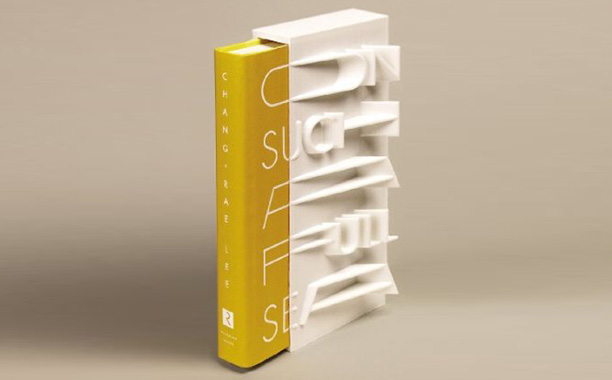First there were 3D movies. Then there were 3D televisions and game systems. Now, apparently, there are 3D book covers.
Riverhead books released “the first-ever 3D printed slipcover” for On Such A Full Sea by Korean American author, Chang-rae Lee. As you can see, the edges are slowly rising as if you were looking at the coverslip with 3D glasses.
So what’s the point of a 3D book cover? As far as we can tell, the main purpose is aesthetics. The cover looks unique and makes for a nice limited edition collector’s piece. After all, how often can you say you have something thats been 3D printed?
According to Time, each coverslip took about 15 hours to print. As cool and innovative as it sounds, Time has pointed out some difficulties with the product such as its bulkiness and inability to properly fit on a bookshelf. And let’s not forget that the price of this thing is $150. (Don’t worry, you can purchase regular copies of the novel for normal prices.)
While we’re not quite certain if we’re ready to dish $150 on this book cover, we admit that this is some really advanced work. This is perfectly fit for a novel which focuses on a futuristic dystopian America. Even if you’re not appealed by the 3D printed book cover, you should look into the novel itself.
According to Polymic, “Lee has just published his fifth novel, On Such a Full Sea, a dystopian story of a post-climate change and post-racial America, and he is finally getting the attention he deserves. In fact, he’s just written a novel so sensitive to the plight of Asian Americans in America that it may well come to be the Great Asian American novel.”
When Fan, a 16-year old girl who is part of the the small percentage who live in luxurious gated communities, leave her safe confines and ventures into the “counties,” she threatens to break the system.
“This is not the first or even most incisive dystopian vision of America,” Gracie Jin of Polymic writes. “But it is the first in which the role of Asian Americans is crucial, the first in which betrayal – especially of one’s own history and family and past – moves its talons over the immigrant story. By writing American dystopia with Chinese-American protagonists, Lee asserts not only that Asian immigrants have been a part of the history and making of America (an oft told immigrant narrative), but also that they have a stake in the future of America.”
[wp_ad_camp_3]








